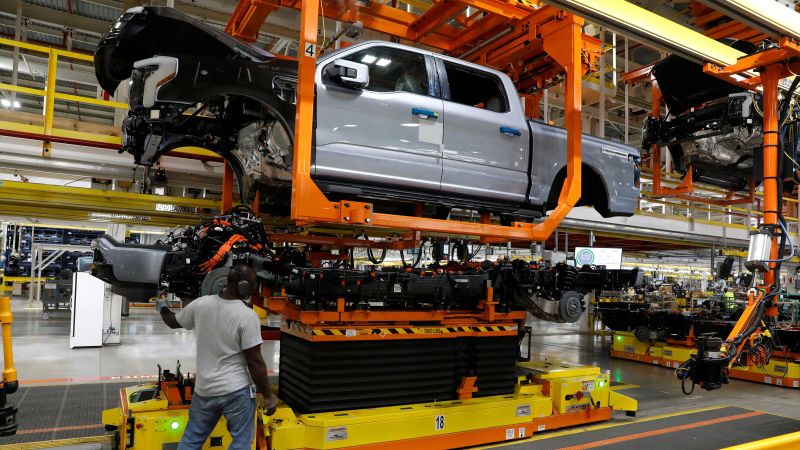Ford has adjusted its roadmap for North American vehicles to focus on hybrids and affordability in response to customers’ price consciousness and range anxiety. The company is offering a broader range of electrification options with lower prices and longer ranges. Ford has decided to replace its plans for all-electric SUVs with hybrid models, which offer shorter battery range but longer overall range when combined with a gasoline engine. This change will cost the company at least $400 million, with a potential total cost of $1.5 billion due to the need to write down manufacturing equipment for the EV SUVs that will no longer be built. However, Ford aims to improve battery sourcing, increase manufacturing efficiency, and reduce capital expenditures on pure electric vehicles to save on costs.
Although Ford’s EV production in America trails behind Tesla, the company’s electric vehicle business is growing. The Ford F-150 Lightning is currently the best-selling electric truck in the United States. With the rising popularity of vehicles with hybrid technology, Ford has decided to meet customers where they are today. CEO Jim Farley stated that the company has learned a lot about customer preferences and values in the EV market and has built a plan to provide maximum choice while leveraging their strengths. Ford will continue to make electric vehicles but at a slower pace, with plans to introduce an electric commercial van in 2026 and a groundbreaking electric truck codenamed “Project T3” in the second half of 2027.
Ford emphasizes the importance of affordable batteries in making electric vehicles accessible to consumers. Farley highlighted that competitiveness in battery cost is essential for competitiveness in the EV market. By improving battery manufacturing and introducing innovative features like bi-directional charging in its electric truck, Ford aims to lower the cost of its vehicles and offer more value to customers. The company’s decision to shift its focus towards hybrids and affordability reflects the changing landscape of the electric vehicle market in America, where customers are seeking cost-efficient options with longer ranges.
The shift in Ford’s EV plans includes an adjustment in annual capital expenditures, with a reduced focus on pure electric vehicles from 40% to 30%. The company’s decision to prioritize hybrids and affordability aligns with customer preferences and market trends in the United States. Despite the financial implications of changing its lineup from all-electric SUVs to hybrid models, Ford aims to enhance its battery sourcing, increase manufacturing efficiency, and ultimately offer customers maximum choice while leveraging its strengths in the EV market. Ford’s commitment to sustainable transportation and innovation will drive its future offerings in the electric vehicle segment.
Ford’s strategy to offer a diverse range of electrification options, focusing on hybrids and affordability, reflects the company’s response to changing customer needs in the EV market. By introducing a mix of hybrid and electric vehicles, Ford aims to meet the demands of price-conscious and range-anxious consumers while leveraging its strengths in the automotive industry. The company’s decision to delay the introduction of its groundbreaking electric truck to the second half of 2027 indicates a shift in priorities towards ensuring cost competitiveness and value for customers. With a focus on battery cost reduction and innovative features, Ford is positioning itself to remain a key player in the evolving electric vehicle landscape.


